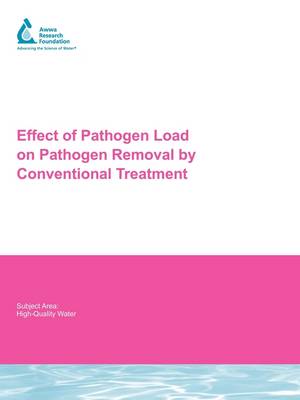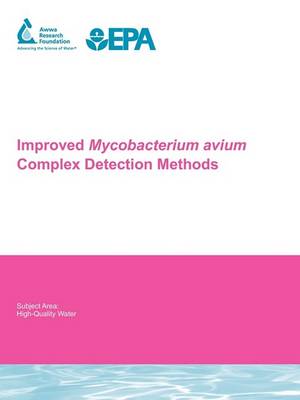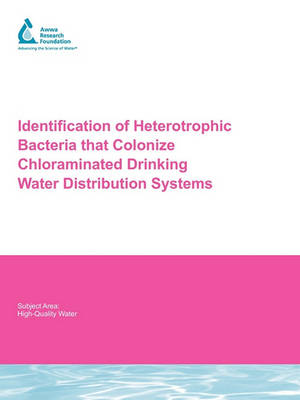Water Research Foundation Report
3 total works
Effect of Pathogen Load on Pathogen Removal by Conventional Treatment
by G. Harrington, P. Assavasilavasukul, B. Lau, R. Hoffman, and M. Borchardt
Published 15 December 2008
The overall goal of this study was to evaluate pathogen removals in conventional water treatment at pathogen concentrations nearer to those found in the aquatic environment. Specific objectives included (1) measurement of pathogen removal at concentrations of 101 pathogens/L rather than 106 pathogens/L, (2) comparison of grab and composite sampling methods, and (3) comparison of alternative enumeration procedures.
In the Long-Term 2 Enhanced Surface Water Treatment Rule, conventional treatment plants received a 3-log credit for oocyst removal if they met the filtration requirements of the rule. This credit was based largely on experiments with pathogen concentrations 6 to 8 orders of magnitude higher than those observed in practice. Thus, there is considerable uncertainty about pathogen removals that would be attained under more realistic situations. The removal of Cryptosporidium oocysts and Giardia cysts through conventional treatment was observed to depend on initial pathogen spike dose. Removal increased with increasing spike dose and statistical analyses suggested that log removal differences between low and high concentration trains were statistically significant in most cases. This was consistent with fundamental expectations. Similar results were observed for the unit processes of sedimentation and granular media filtration. Composite sampling with continuous flow separation channel centrifugation allowed for better detection of pathogens in filter effluent due to increased sample volume.
In the Long-Term 2 Enhanced Surface Water Treatment Rule, conventional treatment plants received a 3-log credit for oocyst removal if they met the filtration requirements of the rule. This credit was based largely on experiments with pathogen concentrations 6 to 8 orders of magnitude higher than those observed in practice. Thus, there is considerable uncertainty about pathogen removals that would be attained under more realistic situations. The removal of Cryptosporidium oocysts and Giardia cysts through conventional treatment was observed to depend on initial pathogen spike dose. Removal increased with increasing spike dose and statistical analyses suggested that log removal differences between low and high concentration trains were statistically significant in most cases. This was consistent with fundamental expectations. Similar results were observed for the unit processes of sedimentation and granular media filtration. Composite sampling with continuous flow separation channel centrifugation allowed for better detection of pathogens in filter effluent due to increased sample volume.
Improved Mycobacterium avium Complex Detection Methods
by M. T. Collins, A. Yuroff, R. Hoffman, G. Harrington, and A. Jacque
Published 1 February 2009
Mycobacteria belonging to the M. avium complex (MAC) are opportunistic pathogens found in planktonic forms, in biofilms, and within protozoa. Members of this complex are commonly associated with human disease. While a respectable amount of information is available on the occurrence of these pathogens, current methods of detection limit conclusions about their true presence in water distribution systems. MAC species are thus prime targets for improved methods of detection in finished water.
The objectives of this project included the following:
Production of a highly accurate and reliable MAC detection technique entailed optimizing numerous method components of a multi-step process. These steps were conducted in the lab and included concentration of MAC-spiked water samples, decontamination of the concentrated samples, selective concentration of mycobacteria, and detection and enumeration of total MAC and identification of MAC species. Concentration approaches included centrifugation and filtration trials. Decontamination studies assessed the efficacy of chlorine and cetylpyridinum chloride (CPC) against common water bacterial contaminants as well as mycobacteria. Methods for accurate identification and quantification of MAC species using liquid culture and genetic analysis (PCR) were validated. The final multi-step method was tested with treated water.
The objectives of this project included the following:
- Evaluate liquid culture methods for growth of finished water-habituated Mycobacterium avium (MAC)
- Compare filtration vs. centrifugation for concentration of M. avium ss. avium (MAA)
- Assess decontamination methods on MAC isolation
- Identify anti-MAC antibodies for immunomagnetic separation (IMS) concentration
- Evaluate newly-developed IMS bead constructs for selective MAC concentration
- Establish and evaluate real time capacity for a validated multiplex MAC PCR
- Evaluate methods under simulation for both surface associated and planktonic MAC
Production of a highly accurate and reliable MAC detection technique entailed optimizing numerous method components of a multi-step process. These steps were conducted in the lab and included concentration of MAC-spiked water samples, decontamination of the concentrated samples, selective concentration of mycobacteria, and detection and enumeration of total MAC and identification of MAC species. Concentration approaches included centrifugation and filtration trials. Decontamination studies assessed the efficacy of chlorine and cetylpyridinum chloride (CPC) against common water bacterial contaminants as well as mycobacteria. Methods for accurate identification and quantification of MAC species using liquid culture and genetic analysis (PCR) were validated. The final multi-step method was tested with treated water.
Identification of Heterotrophic Bacteria That Colonize Chloraminated Drinking Water Distribution Systems
by D. Noguera, L. Yilmaz, G. Harrington, and R Goel
Published 1 July 2009
Bacterial regrowth in chloraminated distribution systems encompasses the growth of ammonia-oxidizing bacteria (AOB), nitrite-oxidizing bacteria (NOB), and heterotrophs. While it has been demonstrated that Nitrosomonas oligotropha and Nitrospira spp. are ubiquitous AOB and NOB, respectively, in the drinking water environment, information regarding the identity of heterotrophic bacteria in chloraminated systems is limited. This project was aimed at filling this gap in knowledge by identifying heterotrophs using a 16S rRNA-based molecular biology approach.
The objectives of this project were to (1) identify the heterotrophic bacteria that colonize chloraminated distribution systems using bench-scale, pilot-scale, and full-scale environments, (2) determine whether bench-scale and pilot-scale chloraminated systems are adequate models of full-scale chloraminated distribution systems, in regards to heterotrophic bacteria, and (3) explore the development of an automated ribosomal intergenic spacer analysis (ARISA)-based screening test to identify culturable heterotrophic bacteria in drinking water distribution systems. A molecular biology approach based on the 16S rRNA as a phylogenetic marker was used to identify the heterotrophic bacteria. In addition, ARISA was used for community fingerprinting. Finally, ARISA was explored as a rapid screening and identification test for colonies grown in agar plates.
The following environments were studied: Two bench-scale reactors simulating chloraminated and non-chloraminated environments, respectively. Two pilot-scale distribution systems operated at the University of Wisconsin (UW) and two pilot-scale systems operated by the Louisville Water Company. The UW systems evaluated chloramine dose, while the Louisville systems compared the absence of chloramines with chloramines plus chlorite. Finished water and two water tanks in the distribution system at Louisville. For all environments, only bulk water samples were analyzed.
The objectives of this project were to (1) identify the heterotrophic bacteria that colonize chloraminated distribution systems using bench-scale, pilot-scale, and full-scale environments, (2) determine whether bench-scale and pilot-scale chloraminated systems are adequate models of full-scale chloraminated distribution systems, in regards to heterotrophic bacteria, and (3) explore the development of an automated ribosomal intergenic spacer analysis (ARISA)-based screening test to identify culturable heterotrophic bacteria in drinking water distribution systems. A molecular biology approach based on the 16S rRNA as a phylogenetic marker was used to identify the heterotrophic bacteria. In addition, ARISA was used for community fingerprinting. Finally, ARISA was explored as a rapid screening and identification test for colonies grown in agar plates.
The following environments were studied: Two bench-scale reactors simulating chloraminated and non-chloraminated environments, respectively. Two pilot-scale distribution systems operated at the University of Wisconsin (UW) and two pilot-scale systems operated by the Louisville Water Company. The UW systems evaluated chloramine dose, while the Louisville systems compared the absence of chloramines with chloramines plus chlorite. Finished water and two water tanks in the distribution system at Louisville. For all environments, only bulk water samples were analyzed.


